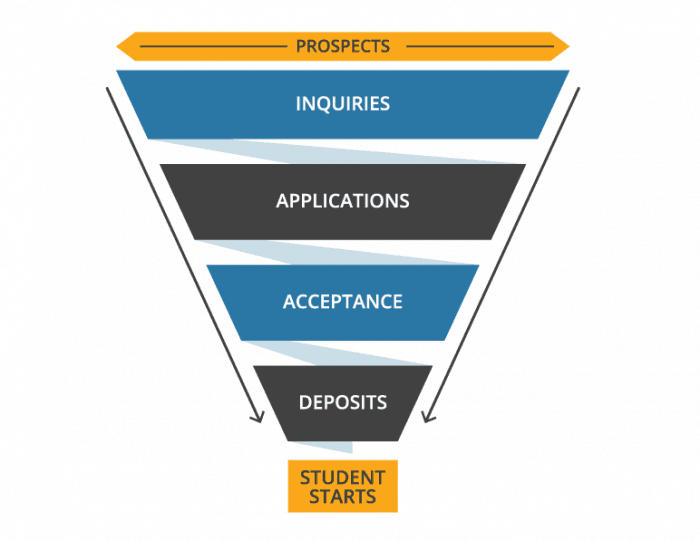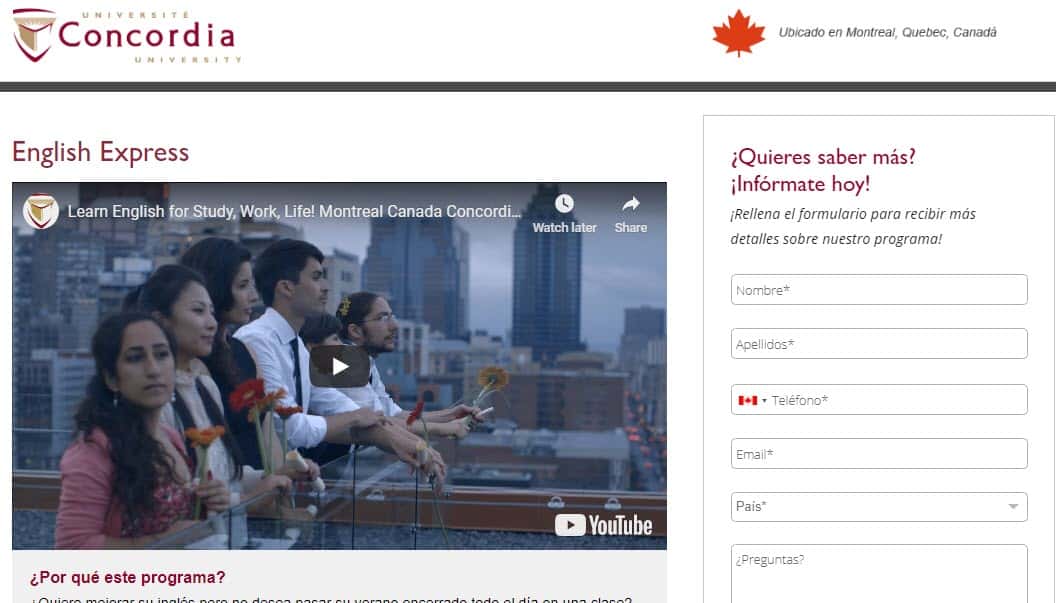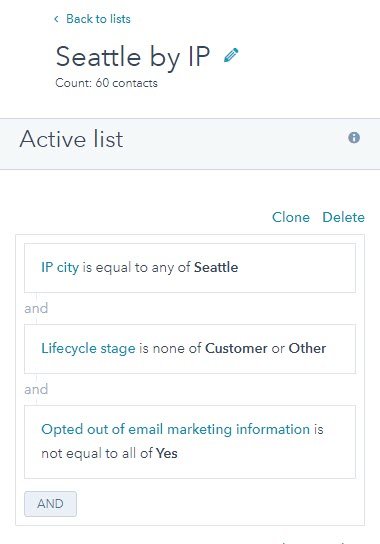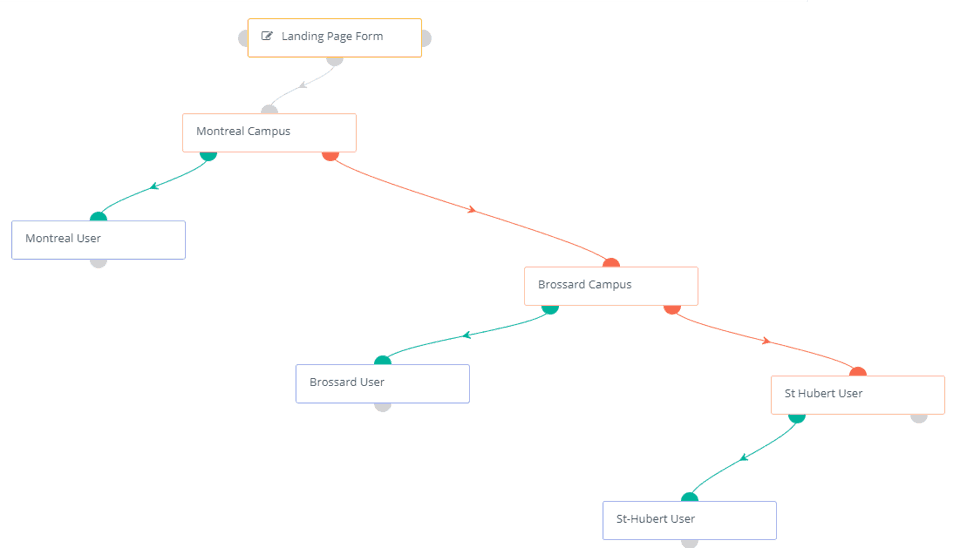
Does your admissions team have trouble dividing its workload? Do you find it difficult to know which prospects to follow up with, and when? Do your emails and other communications sometimes feel too generic, or lack a personal touch?
While each of these problems might seem very different, the root cause of all three is often the same. Across the education sector, the lack of a proper lead segmentation strategy can be one of the biggest limitations holding many schools back.
Fortunately, with the right technology, knowhow, and a bit of hard work, your school can create a list segmentation system that allows you to improve your efficiency, personalize your follow-up activities, and maximize your conversions.
Keep reading to find out how.
Finding the Right Segmentation Model for Your School’s Needs
The interesting thing about segmentation is that there isn’t necessarily a right or wrong way to do it. At its core, segmentation is about finding key characteristics among members of your audience which you can use to differentiate them from others and better target and personalize your recruitment efforts.
These characteristics could be almost anything, and may depend on your school’s needs, goals, and resources. A good first step is to think about the single biggest differences that set members of your target audience apart from one another. These attributes can form the basis of your segmentation model.
Here are a few examples of common approaches that many schools take.
Geographic Segmentation
One of the most straightforward methods of segmenting prospects, dividing leads into lists based on their country, city, or region can help your school to account for any differing motivations, enrollment barriers, and even langauge proficiencies across each of your markets.
Different schools might approach geographic segmentation in different ways. For instance, many schools will consider international students as one large catch-all segment, while others might segment different locations individually in order to tailor their approach for particular markets.
Example: Large institutions like York University will often create web pages offering specific content for prospective students in particular countries.

If you are taking this approach, segmenting your incoming leads by country of origin might be a good way to carry this level of personalization through to your follow-up efforts.
Demographic Segmentation
Do you have students of different ages? Education levels? Household incomes? Practically any of your audience’s demographic characteristics could form the basis of your lead segmentation model.
The key is to look for demographic differences that actually have a significant impact on the needs and wants of prospects. For example, segmenting by age group could be very worthwhile for a university, as the needs of mature students will often differ greatly from younger candidates. On the other hand, it might not be relevant for a summer camp for teenagers, since students will all fall into a defined age group, and their parents are likely to have similar motivations regardless of their age.
Segment by Programs or Courses
Another common way that schools segment leads in an education CRM is by program or course of interest. This option can be ideal if different people in your admissions department have expertise or experience in different areas, as they will find it easier to follow up with prospects who are interested in courses they specialize in.
Segmenting by program can also make personalizing your email communications a lot easier, as you can draw on the course-specific content and resources already at your disposal to create interesting mails.
Psychographic Segmentation Models for Schools
If none of these models work for you, you may need to consider more complex or unusual methods. Psychographic segmentation models differentiate audiences based on things like their attitudes, motivations, personality traits and other psychological criteria. It’s a more subjective approach than segmenting by demographic information, but can yield great results if done well.
There are a few well-known psychographic segmentation models which have been created for the education sector. For instance, the Parthenon Group’s 2014 approach The Differentiated University identified six segments of prospective university students based on their aspirations:
- Aspiring Academics (achieving)
- Coming of Age (transitioning)
- Career Starter (thinking practically)
- Career Accelerators (advancing)
- Industry Switchers (changing career)
- Academic Wanderers (Seeking degree)
These segments were identified through a survey of 3,200 prospective and enrolled American college students. The Coming of Age and Academic Wanderers segments were the smallest of the six, while the other four were fairly evenly split:

World Education Services also developed a working model in 2013 specifically for segmenting international students in its report Student Segmentation for an Effective Enrollment Strategy. The model was based on a survey of students from China, India, and Saudi Arabia, and divided prospects into four distinct segments based on their financial resources and academic preparedness:

The percentage share of each segment was found to differ greatly depending on academic level and the country of origin of respondents:

These models could help to form the basis for your own psychographic segmentation approach. However, if you are going this route, it may be necessary to look closely at the motivations and concerns of your student personas in order to develop an approach that fits with the unique needs and wants of your audience.
Regardless of how exactly you choose to segment your prospects, the important thing is that your team identifies an overarching approach and employs it consistently. If you use different methods of segmentation for different marketing campaigns, for instance, it will make it harder for you to reuse lists from one campaign to the other.
Similarly, it’s important that each member of your team adopts a consistent approach to managing its own leads. If one of your team members segments leads using a different system, you’ll likely wind up with a slew of disorganized lists clogging up your CRM.
If you’re not sure what model is best for your school, the best approach is likely to look at how your team might be segmenting its leads already. Even if they don’t have a formal segmentation model in place, there are likely organizing inquiries according to some criteria as they come in. Using their methods as the basis for your CRM segmentation will make it easier for them to get to grips with the new methodology, and could make it more likely they will adopt it.
Segmentation by Admissions Stages
While the models identified in the previous section will allow you to segment new leads effectively, your approach shouldn’t necessarily be static. As prospects progress through your funnel, further segmentation will likely be necessary for those at different stages of the enrollment journey.

If you are using a CRM system with built-in marketing automation functionality, employing a lead scoring system may be very helpful in this regard. Initial scores can be assigned to leads in each of your basic segments, depending on which ones are most indicative of the quality and interest level of potential applicants. From there, your team can award additional scores for any activity that demonstrates a prospect’s level of interest, such as email opens, downloads, web page views, or even actions like event attendance.
Example: The lead scoring function in Mautic. Here, ten points are being added to the score of any prospect who opens a particular email.

You might then choose to assign score thresholds for prospects to move from one segment to another, allowing you to identify which candidates need more nurturing, and which ones are ready to be pointed towards taking the next step in your application process.
Getting the Info You Need to Segment Properly
While it’s all very well identifying segmentation criteria, your approach won’t work if you don’t have the information you need to place your leads in the right groups. Wherever possible, this should start at the point that they first enter your system.
In certain cases, this will be easy enough to do. For instance, if you are segmenting leads by program and a prospect converts on a landing page related to a particular course, you can configure your CRM to automatically segment them into the correct program list.
Example: A landing page written in Spanish for Concordia University’s English Express program. Depending on its approach, the school could automatically segment any lead who completes this page by program, language, or even by location if their Spanish campaigns are targeted to a particular market.

Segmenting by location can also done automatically if you set up your lists to group prospects based on their IP city or country.
Example: The criteria for an active list in HubSpot which uses the IP address of leads to identify contacts based in Seattle.

For other segmentation models, you may need to ensure that additional form fields are in place to get you the information you need. Your higher education CRM system will likely have a number of preset contact properties that you can include to ensure leads are placed in the correct segment. If you’re looking for something a bit more particular, you can create custom properties based on whatever it is that you want to know.
Example: WU Executive Academy’s forms include a ‘motivation’ field, in which prospects are invited to offer specific reasons they are considering an MBA. This property could form the basis for psychographic segmentation in a CRM.

Of course, in some cases, it may not be possible to get the information you need right from the first point of conversion. Prospects may not want to complete longer forms for lower level offers such as newsletter signups, for instance, and thus might have to enter your system with just their name and email for you to work with.
Example: On their homepage, WU executive Academy also have a pop-up CTA encouraging prospects to sign up for their newsletter, which requires just a name and email address.

Leads who sign up here will be unsegmented and less qualified than those who complete the inquiry form, but requiring fewer fields may also increase the likelihood of conversion.
Some prospects may also make inquiries offline, or just not fill out all the fields in your lead capture forms. In these cases, your follow-up process will play a crucial role in helping you find out what you need to know and qualify them for a specific segment. If you have the resources, having your team members contact them personally by phone or email can be the best way of getting results in this regard.
If not, another possible avenue might be to use automated email marketing to do some ‘progressive profiling’. This is a lead nurturing methodology that involves serving prospects with additional offers in order to entice them to give you more information. For example, you could create a separate list for all your leads that don’t fill specified segments, and then serve them an email campaign offering a free brochure or another kind of gated offer if they complete an additional form which contains the fields you need to qualify them.
The Power of Segmentation for Student Recruitment
There are a number of benefits to segmenting your leads using CRM for schools. For a start, dealing with specific groups makes it far easier to organize your team’s activities and tasks. You can assign ownership of your segments to specific members of your team, ensuring your workload is distributed fairly and that the right people follow up with each group of prospects.
Example: A lead ownership workflow in Mautic, which divides leads by campus.

You can also create segmented workflows for follow-up activities, so that each prospect is contacted in a timely manner and high priority leads receive the attention they deserve. Not only that, but knowing what segment of your audience the leads they are contacting fall into will help your team when initiating conversations, as they will know what approaches and unique selling points are likely to resonate with each particular candidate.
At a more advanced level, segmented lists provide the perfect foundation for automated marketing activities. Email lead nurturing campaigns, for instance, can be personalized according to different segments so that the messaging and offers you communicate are tailored to common motivations of those prospects. At the other end of the scale, you can create exclusion or suppression lists for prospects who are unlikely to be interested in certain emails or offers, so that they are not spammed with irrelevant communications from your school.
Having properly segmented lists will also make it easier to promote attendance of any events you organize, such as open days, campus tours or webinars. Once you know what characteristics your leads have, you can create a list of invitees who are likely to be interested in specific events. For instance, segmenting by location will ensure you have a list of local leads ready to go if you are running an event in a particular area.
Example: London Business School send mails about their upcoming North American events to prospects in the region.

Outside of your direct follow-up efforts, segmented lists can also form the basis for further marketing initiatives. Your team could opt to create remarketing campaigns on platforms like Facebook Ads in order to reengage existing leads and push them further towards application.
Aside from all that, segmentation also offers you an abundance of the one thing that is the holy grail for digital marketing: information. Identifying and grouping each of your existing leads based on their most important characteristics will help you to track your success with each particular group and identify what they respond to, what turns them off, and what opportunities you have to grow your audience.







